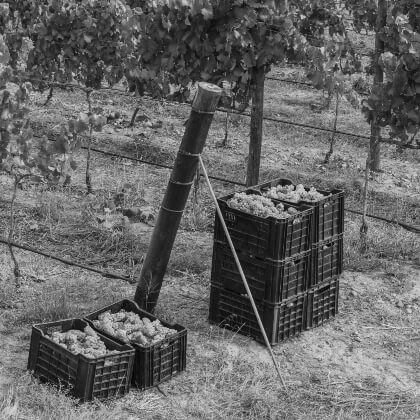
The art of winemaking is an intricate process that involves several detailed steps. Although it varies slightly depending on the varietal of grapes and the specific techniques employed by different wineries, the fundamental stages remain the same. This article will take you through the five main steps involved in making wine.
Ideal for both wine connoisseurs looking to broaden their knowledge, and those just beginning their wine appreciation journey, you’ll find this exploration of winemaking both enlightening and engaging. So let’s begin our tour through the proverbial vineyard, and delve into the world of viticulture.
The Harvest
The first step in the winemaking process is the harvest. Grapes are picked from the vineyards when they have reached their peak ripeness. The moment these grapes are harvested can directly influence the quality of the wine as this determines the acidity, sweetness, and flavor of the grapes.
Next, they are quickly transported to the winery to preserve their quality. Some wineries even opt for night harvesting, a strategy aimed at ensuring the grapes remain cool, therefore reducing the risk of oxidation and maintaining the best fruit quality for winemaking.
Once at the winery, the grapes are sorted, with rotten or overripe grapes being removed to ensure only the highest quality fruit is used.
Fermentation
Fermentation is where the magic truly happens. The grape juice is transferred into a fermentation vessel (like a barrel or stainless steel vat), where it comes into contact with yeast. The yeast then converts the sugar within the grapes into alcohol, a process that can take anywhere from one week to one month.
The fermentation process also produces heat, which requires temperature regulation. Some winemakers control this temperature by transferring the fermenting grape must (the mixture of grape juice, skins, seeds, and sometimes stems) into temperature-controlled stainless-steel vats.
During this stage, the winemaker may also choose to macerate the blend. Maceration involves letting the grape juice and grape skins sit together, imparting color, tannins, and aroma into the juice.
Clarification
Following fermentation, the result is a cloudy mixture, called ‘must,’ comprised of wine, grape solids, and dead yeast cells. To produce a clear wine, it needs to undergo the process of clarification or ‘fining.’
This process typically involves adding substances like egg white or bentonite clay to the must, which bind with the remaining solids, causing them to precipitate out of the mixture. The winemaking team then filters out these solids, leaving a much clearer liquid.
Some winemakers opt to leave this less aesthetically pleasing mixture to sit, allowing these solids to naturally settle at the bottom, a process known as racking. After a period, the clear wine can be siphoned off, leaving the sediment behind.
Aging
Once the wine has been clarified, it’s ready for the aging process, which can enhance the wine’s complexity and harmony. The winemaker may decide to age the wine in stainless steel tanks, which generally preserve the fruit’s original flavors, or in oak barrels, which can impart additional characteristics and add a layer of complexity to the wine’s profile.
During aging, the winemaker might undertake further racking, where the clear wine is transferred into a new barrel, leaving sediment behind and thus further clarifying the wine.
Bottling
The final step in the winemaking process is bottling. Before it makes its way into the bottle, however, some winemakers may decide to further fine and filter the wine. Although filtering can ensure a perfectly clear product, some believe it can strip the wine of some flavors and complexity.
Once it’s ready, the wine is then carefully siphoned into bottles and sealed with corks or screw caps, ready for distribution and ultimate enjoyment by wine lovers worldwide.
In Conclusion
Wine is much more than a delightful accompaniment to a meal or a relaxing way to end the day. The careful steps involved in producing each bottle of wine, from grape picking to bottling, reflect a tradition of craftsmanship and reverence for quality.
If this exploration into how wine is made has piqued your interest and you’d love to further your appreciation of this artistic process, then why wait? Indulge your fascination by savoring the result of this elaborate journey. Each bottle unravels an exclusive narrative of passion and tradition, so why not uncork one and be part of this incredible story told through flavors and aromas.
